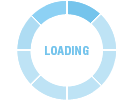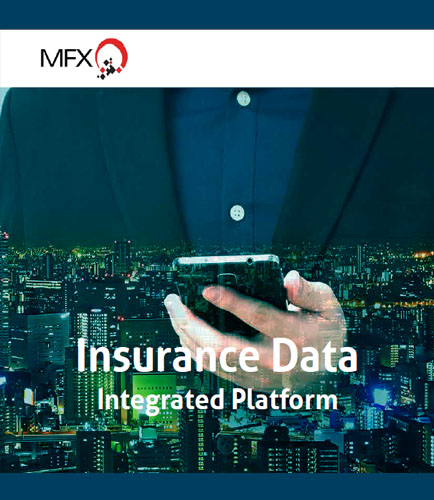
PROCESSING. PLEASE WAIT...

White Paper: MFX
Today's insurance industry companies face a time of tremendous change because of the shift in economic circumstances, changing customer expectations, and increased competition from new players in the market. To meet these challenges, the insurance industry is turning to digital transformation by adopting innovative business models similar to those increasingly seen in other industries.
Data has always been at the center of the insurance industry, and despite the changes that are to come, data will continue to be the focal point of the industry. Insurance carriers have to leverage data as an asset, enabling automated decision-making in critical business processes in order to thrive. MFX Services has developed the Insurance Data Integrated Platform with this broader approach in mind.
The IDIP is an Enterprise Information Management platform built specifically for the insurance industry. The platform has the ability to ingest data from any industry-standard core and auxiliary systems, leverage the data available regardless of whether it is of structured or unstructured format, and process it to create condensed information.
This whitepaper paper focuses on three MFX solutions – the Insurance Data Integrated Platform, the Unified Interactive Interface, and the MFX Corporate Records Solution each of which are designed to help P&C specialty insurers remain competitive in the future industry landscape.
Download the guide now to discover:
Facilitating digital transformation in the insurance industry
What are the data-centric challenges typically faced by the insurance industry at large?
How Enterprise Information Management (EIM) solution address the needs of insurance carriers
Advantages of MFX’s Unified Interactive Interface to insurance carriers

By: DigitalML
Large insurance firms are continually looking for latest business opportunities to power their digital transformation, as many existing business lines are flat or declining. In going digital, the main goal is to allow the insurance company to provide a more streamlined omni-channel customer experience. This whitepaper discusses about how insurance firms are speeding IT transformation with business-led canonical APIs. Key takeaways from this whitepaper: Delivering digital transformation for insurance demands a new approach Going digital gives insurers a stronger identity Leading insurance firms have already moved to this new agile approach Agile integration APIs & services deliver consistent business results
By: AutoRek
As we know, bank reconciliation is the process of matching the balances in an entity's accounting records for a cash account to the corresponding information on a bank statement. The goal of this process is to determine the differences between the two, and to book changes to the accounting records as appropriate. The challenge in automating a lot of complicated reconciliations comes not within the matching, but in gathering the information from the myriad systems and services and making ready them to create “golden sources” on either side of the reconciliation. It is the “golden sources” that make matching effective, aid the analysis and resolution of the unmatched items and allow effective reporting. This white paper breaks the reconciliation method down into variety of basic tasks. Each of the five steps—Source, Explore, Enrich, Match, and Escalate—is applied to every reconciliation scenario to some greater or lesser extent. This white paper educates how building and automating simple reconciliations, as quickly as in Excel, allows automatic execution of the most complicated reconciliation and data management challenges running in ultra-high volume scenarios. Read the following whitepaper that will address the following questions : What are the best practices for Bank Reconciliation Processes? What are the challenges in automating more complex reconciliations? How to overcome the drawbacks of Excel-based solutions? How this 5-step approach can build and automate simple reconciliations?


 2025 All Rights Reserved | by: www.ciowhitepapersreview.com
2025 All Rights Reserved | by: www.ciowhitepapersreview.com